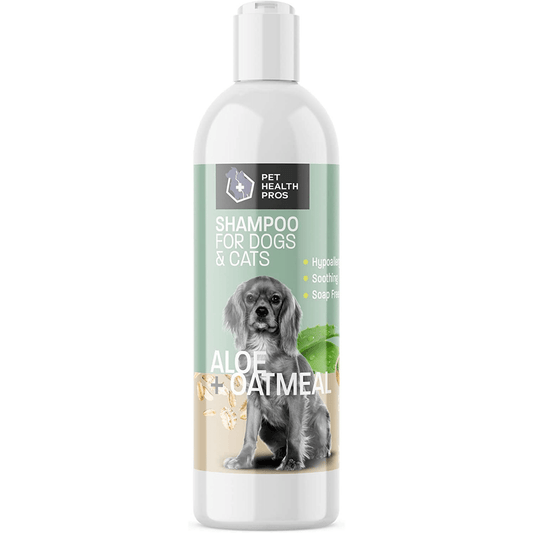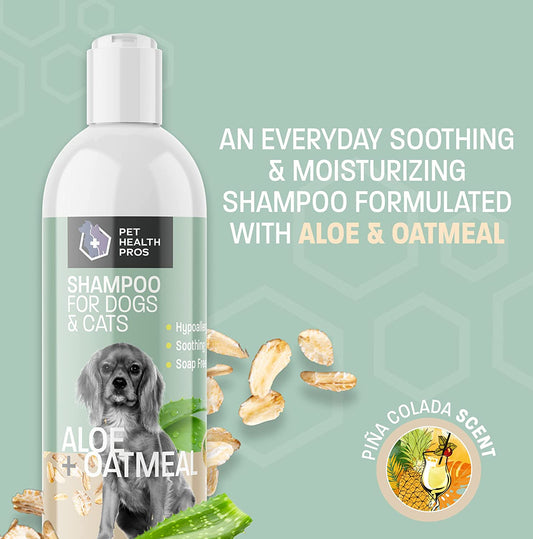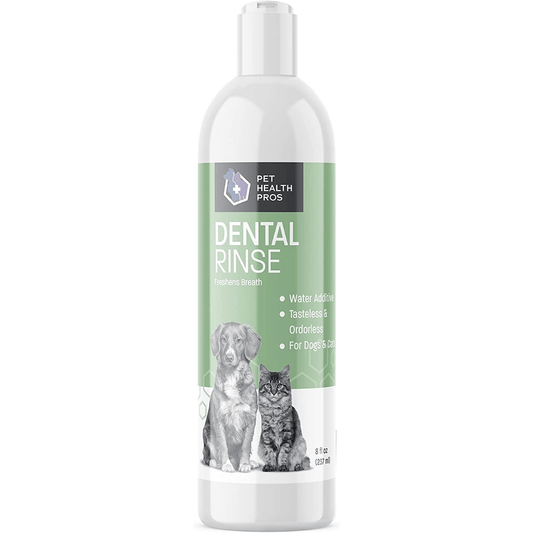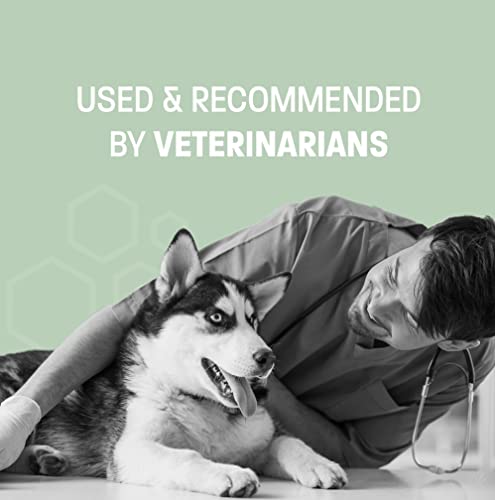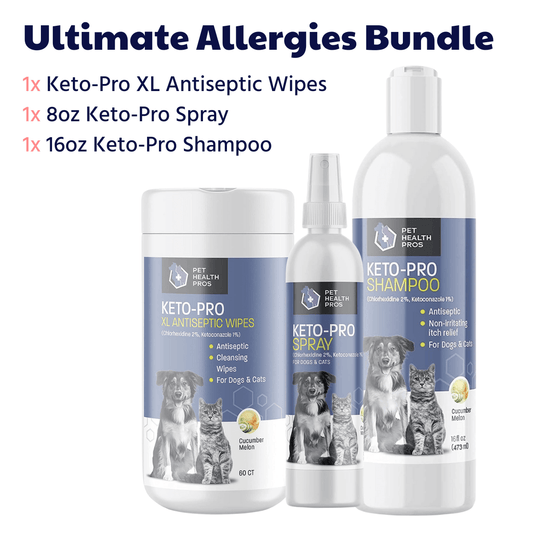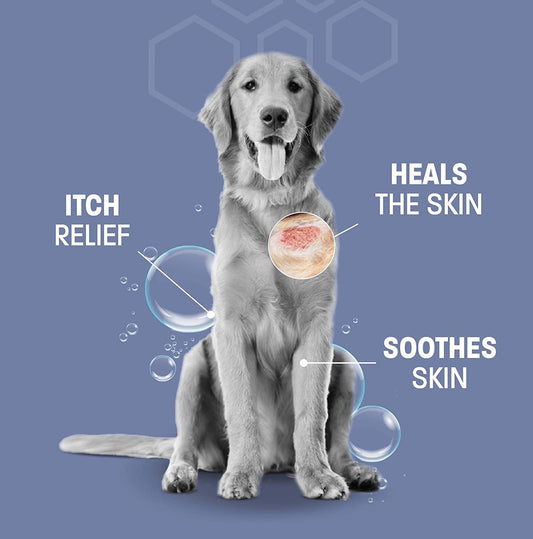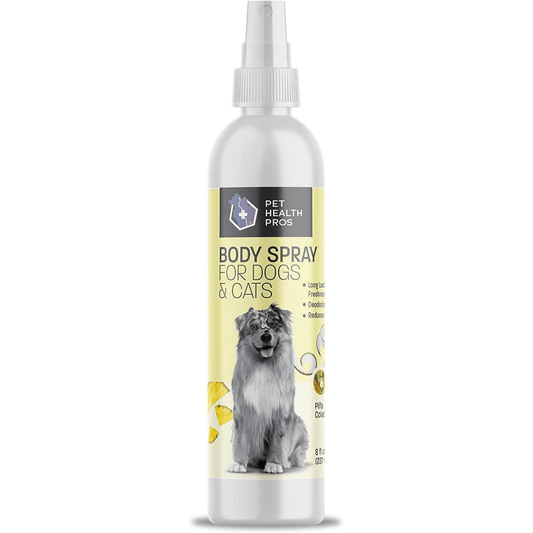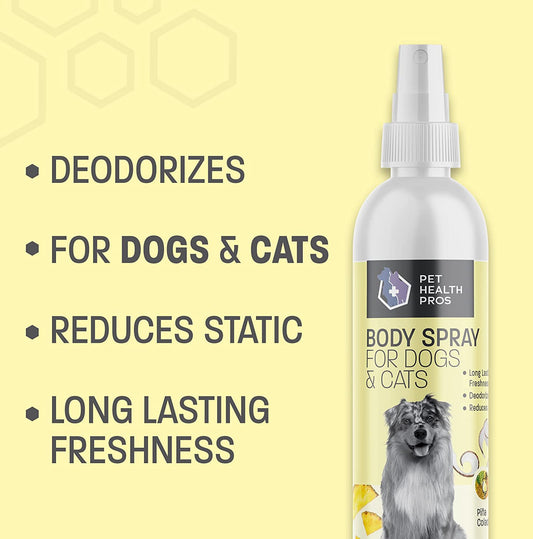If you're a dog owner, you know that dogs can be curious and sometimes get into trouble by chewing on things they shouldn't. Making your own no chew dog spray can help protect your belongings and teach your furry friend what is off-limits. This guide will walk you through the reasons for using a no chew spray, how to make it, and tips for training your dog to stop chewing. You'll also learn about other ways to keep your dog entertained and happy without chewing on your stuff.
Key Takeaways
- Dogs chew for various reasons, including boredom and anxiety.
- Using a no chew spray can help keep your dog away from harmful items.
- You can make no chew spray using natural ingredients that are safe for pets.
- Applying the spray consistently is key to its effectiveness.
- Training your dog with positive methods can reduce unwanted chewing.
Understanding the Need for DIY No Chew Dog Spray
Why Dogs Chew on Household Items
Dogs often chew on things for various reasons. Some common reasons include:
- Boredom: Dogs need mental and physical stimulation.
- Teething: Puppies may chew to relieve discomfort.
- Anxiety: Chewing can be a way for dogs to cope with stress.
Common Dangers of Chewing for Dogs
Chewing on inappropriate items can lead to serious problems, such as:
- Choking hazards: Small objects can get stuck in their throat.
- Toxic materials: Some household items can be harmful if ingested.
- Dental issues: Chewing on hard objects can damage teeth.
Benefits of Using a No Chew Spray
Using a no chew spray can help protect your belongings and keep your dog safe. Some benefits include:
- Deterring unwanted chewing: The unpleasant taste discourages dogs from chewing.
- Safe for pets: Many DIY sprays use natural ingredients, making them safer.
- Cost-effective: Making your own spray can save money compared to store-bought options.
A no chew spray can be a simple yet effective solution to help manage your dog's chewing habits.
In summary, understanding why dogs chew and the potential dangers can help pet owners take proactive steps. By using a DIY no chew spray, you can create a safer environment for your furry friend while protecting your home from damage. Remember, you can opt to use lemon juice in place of apple cider vinegar to make a dog deterrent. In this case, use 2 parts of lemon juice and one part of white vinegar.
Essential Ingredients for Making No Chew Dog Spray
Natural Ingredients to Consider
When creating a no chew dog spray, it's important to use natural ingredients that are safe for your pet. Here are some effective options:
- Apple Cider Vinegar: Known for its strong scent, it can deter dogs from chewing.
- Citrus Juice: Dogs generally dislike the smell of citrus, making it a great choice.
- Bitter Apple Spray: This is a common commercial option that many dogs find unappealing.
Safety Precautions When Choosing Ingredients
Always prioritize your dog's safety when selecting ingredients. Here are some tips:
- Avoid toxic substances like essential oils that can harm pets.
- Test any new ingredient on a small area first to ensure it doesn’t cause damage.
- Consult with your veterinarian if unsure about any ingredient.
Where to Source Ingredients
You can find the ingredients for your no chew spray in various places:
- Local grocery stores: Many natural ingredients are available here.
- Pet supply stores: They often carry specialized products like bitter apple spray.
- Online retailers: A wide selection of ingredients can be found online, often at competitive prices.
Remember, the goal is to create a safe and effective spray that helps protect your belongings while keeping your dog safe.
By using the right ingredients, you can make a no chew spray that is both effective and safe for your furry friend. Mixing the right components will help you achieve the best results!
Step-by-Step Guide to Making DIY No Chew Dog Spray
Gathering Your Supplies
To create your own no chew dog spray, you will need to gather a few essential supplies. Here’s a quick list of what you’ll need:
- Spray bottle (preferably glass or high-quality plastic)
- Water
- Bitter apple or other safe deterrent ingredients
- Funnel (for easy pouring)
Mixing the Ingredients
Once you have your supplies ready, it’s time to mix the ingredients. Follow these steps:
- Start by filling the spray bottle halfway with water.
- Add your chosen deterrent ingredient, such as bitter apple, to the water. A good ratio is about 1 part deterrent to 2 parts water.
- Shake the bottle well to ensure everything is mixed thoroughly.
Tip: Always test a small area of the item you want to protect before applying the spray widely.
Proper Storage Techniques
After making your no chew spray, proper storage is key to maintaining its effectiveness. Here are some tips:
- Store the spray in a cool, dark place to prevent degradation.
- Label the bottle clearly to avoid confusion.
- Keep it out of reach of pets and children to ensure safety.
Remember, using a no chew spray is just one part of managing your dog's chewing habits. Combining it with training and positive reinforcement can lead to better results.
By following these steps, you can create a simple and effective no chew spray that helps protect your belongings while keeping your dog safe. This DIY solution is a great way to address chewing issues without resorting to harmful chemicals. If you have any concerns about your dog's chewing behavior, consider consulting a professional or using resources like pet genius for tailored advice.
How to Apply No Chew Dog Spray Effectively
Using a no chew spray can be an effective way to deter your dog from chewing on unwanted items. Here’s how to do it properly:
Identifying Problem Areas
- Look for spots where your dog frequently chews. Common areas include furniture, shoes, and electrical cords.
- Observe your dog’s behavior to find out what they like to chew on the most.
- Make a list of these items to ensure you cover all bases when applying the spray.
Techniques for Applying the Spray
- Spray directly on the items you want to protect. Make sure to cover the entire surface.
- Allow the spray to dry completely before letting your dog near the area.
- Reapply the spray every few days or after cleaning the area to maintain its effectiveness.
Frequency of Application
- Initially, apply the spray daily for the first week.
- After that, you can reduce it to every few days, depending on your dog’s response.
- Always monitor your dog’s behavior and adjust the frequency as needed.
Remember, using a no chew spray is just one part of the solution. Combining it with behavioral training can lead to better results in stopping your dog from chewing destructively.
By following these steps, you can effectively use no chew spray to protect your belongings while also addressing the root causes of chewing behavior.
Training Your Dog Alongside Using No Chew Spray
When dealing with a dog that loves to chew on things they shouldn’t, it’s important to combine the use of no chew spray with effective training techniques. This dual approach can help your dog learn what is acceptable to chew on and what isn’t.
Positive Reinforcement Techniques
- Reward Good Behavior: Whenever your dog chooses to chew on their toys instead of household items, give them praise or a treat.
- Redirect Attention: If you catch your dog chewing on something inappropriate, gently redirect them to a toy and reward them when they engage with it.
- Use Commands: Teach commands like "leave it" or "no" to help your dog understand when they are doing something wrong.
Consistency in Training
- Daily Practice: Spend a few minutes each day reinforcing training commands and rewarding good behavior.
- Involve Family Members: Ensure everyone in the household uses the same commands and rewards to avoid confusing your dog.
- Be Patient: Training takes time, so be patient and consistent with your dog’s progress.
Monitoring Your Dog's Progress
- Keep a Journal: Track your dog’s chewing habits and note improvements or setbacks.
- Adjust Techniques: If certain methods aren’t working, be open to trying new approaches.
- Celebrate Milestones: Acknowledge and celebrate when your dog shows improvement in their chewing behavior.
Combining training with no chew spray can lead to a more effective solution for your dog’s chewing habits. Training is often the more effective long-term approach to prevent destructive chewing.
By integrating these training methods with the use of no chew spray, you can help your dog learn better habits while keeping your home safe from their chewing tendencies. Remember, the goal is to create a positive environment where your dog feels encouraged to make the right choices.
Troubleshooting Common Issues with No Chew Dog Spray
When the Spray Isn't Working
If your no chew spray isn't stopping your dog from chewing, consider the following:
- Check the application: Ensure you are applying the spray correctly and covering the areas your dog tends to chew.
- Reassess the formula: Some dogs may not be deterred by certain ingredients. You might need to try a different recipe.
- Behavioral factors: Sometimes, chewing is a sign of boredom or anxiety. Addressing these underlying issues can help.
Adjusting the Formula
If the spray isn't effective, you can adjust the formula by:
- Adding more bitter ingredients like bitter apple or citrus extracts.
- Reducing the water content to make the spray stronger.
- Experimenting with different essential oils that dogs dislike, such as eucalyptus or peppermint.
Consulting a Veterinarian
If problems persist, it’s wise to consult a veterinarian. They can help you understand:
- Possible health issues that may cause excessive chewing.
- Recommendations for safe and effective products.
- Behavioral training options that can complement the use of no chew spray.
Remember, while no chew sprays can be helpful, they are most effective when combined with proper training and attention to your dog's needs.
Exploring Alternative Solutions to Chewing Problems
Providing Chew Toys
One of the best ways to redirect your dog's chewing behavior is by providing them with appropriate chew toys. Here are some options:
- Rubber toys: Durable and can withstand heavy chewing.
- Rawhide chews: Popular but should be given with caution due to choking hazards.
- Dental chews: Help clean teeth while satisfying the urge to chew.
Environmental Enrichment
Creating a stimulating environment can help reduce your dog's desire to chew on inappropriate items. Consider these strategies:
- Interactive toys: Toys that require problem-solving can keep your dog engaged.
- Puzzle feeders: These make mealtime fun and mentally challenging.
- Regular exercise: A tired dog is less likely to chew out of boredom.
Professional Training Options
If chewing becomes a serious issue, seeking help from a professional trainer can be beneficial. They can provide tailored advice and techniques to manage your dog's behavior effectively.
Remember, addressing chewing behavior takes time and patience. Consistency in your approach will yield the best results.
By exploring these alternatives, you can help your dog find appropriate outlets for their chewing instincts while keeping your belongings safe. This approach can be a great complement to using a DIY no chew spray for a comprehensive solution.
If you're facing issues with chewing, there are many other options to consider. Don't let these problems hold you back! Visit our website to discover a variety of solutions that can help you and your pet. Explore our products today!
Conclusion
In summary, making your own no chew dog spray is a simple and effective way to help keep your pet from chewing on things they shouldn't. By using safe ingredients like vinegar and citrus, you can create a spray that is not only easy to make but also gentle for your dog. Remember to test the spray on a small area first to ensure it won't harm your furniture or other items. With a little effort, you can protect your belongings and teach your dog what is off-limits. Happy crafting!
Frequently Asked Questions
What is DIY no chew dog spray?
DIY no chew dog spray is a homemade solution that helps stop dogs from chewing on things they shouldn't. It usually has ingredients that taste bad to dogs, making them think twice before chewing.
How do I know if my dog needs no chew spray?
If your dog is chewing on furniture, shoes, or other household items, it might be a sign they need no chew spray. Also, if they seem bored or anxious, this spray can help.
Is it safe to use no chew spray on my dog?
Yes, as long as you use safe, natural ingredients. Always check the ingredients to make sure they won't harm your dog. If you're unsure, ask your vet.
How often should I apply the no chew spray?
You should apply the no chew spray daily, especially in areas where your dog likes to chew. Reapply it after cleaning or if the smell fades.
Can I use no chew spray on my puppy?
Yes, you can use no chew spray on puppies. Just make sure the ingredients are safe for young dogs. Always supervise them when using the spray.
What if the no chew spray doesn't work?
If the spray isn't working, try changing the formula or applying it more often. You can also consult a vet for more advice on chewing issues.

